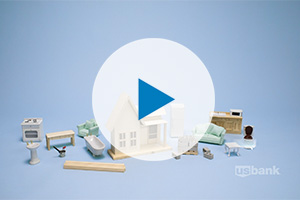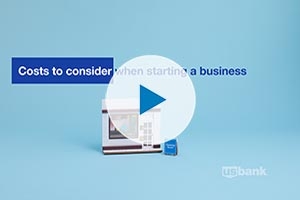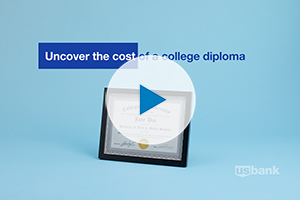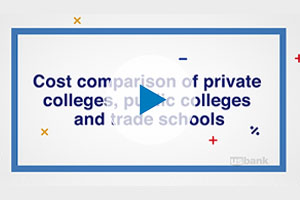
LGBTQ+ retirement planning: What you need to know

How to retire happy

Retirement income planning: 4 steps to take

Reviewing your beneficiaries: A 5-step guide

Is a Health Savings Account missing from your retirement plan?

Multiple accounts can make it easier to follow a monthly budget

Your 4-step guide to financial planning

How grandparents can contribute to college funds instead of buying gifts

A beginner's guide to investing

Estate planning documents: Living trusts vs. will vs. living will

4 ways to free up your budget (and your life) with a smaller home

Webinar: Uncover the cost: Home renovation

LGBTQ+ financial planning tips

Do your investments match your financial goals?

ABCs of APIs: Drive treasury efficiency with real-time connectivity

The secret to successful service provider integration

Insource or outsource? 10 considerations

The AI journey in finance: How to make it part of your strategy

Blockchain: Separating hype from substance

Leveraging the ASC-842 rule changes in equipment lease accounting

Retirement savings by age

5 things to avoid that can devalue your home

What you need to know before buying a new or used car

Key milestone ages as you near and start retirement

Should I itemize my taxes?

Preparing for retirement: 8 steps to take

Addressing financial uncertainty in international business

3 ways to make practical use of real-time payments

Drive digital transformation with payments innovation

Unexpected cost savings may be hiding in your payment strategy

Want AP automation to pay both businesses and consumers?

Lost job finance tips: What to do when you lose your job

Automate accounts payable to optimize revenue and payments

Automate escheatment for accounts payable to save time and money

Banking connectivity: Helping businesses deliver the easier, faster, more secure customer experience of the future

6 pandemic money habits to keep for the long term

Finance or operating lease? Deciphering the legalese of equipment finance

Empowering managers with data automation and integration

Treasury management innovations earn Model Bank awards

How I did it: Bought a home without a 20 percent down payment

P2P payments make it easier to split the tab

Checklist: 10 questions to ask your home inspector

Closing on a house checklist for buyers

Unexpected expenses: 5 small business costs to know and how to finance them

Common small business banking questions, answered

How to track expenses

How to build wealth at any age

Investment strategies by age

Common questions about electric vehicles (EVs)

5 financial goals for the new year

How to get started creating your business plan

ABL mythbusters: The truth about asset-based lending

10 ways to increase your home’s curb appeal

What documents do you need after a loved one dies?

How to plan and save for adoption and in vitro fertility treatment costs

11 essential things to do before baby comes

3 signs it’s time for your business to switch banks

How to manage money tips

For today's homebuyers, time and money are everything

Uncover the cost: International trip

Uncover the cost: Wedding

4 reasons why estate planning is important

What is Medicare? Understanding your coverage options

Using 529 plans for K-12 tuition

Retirement plan options for the self-employed

How to open and invest in a 529 plan

How to manage your finances when you're self-employed

Safeguarding the payment experience through contactless

COVID-19 safety recommendations: Are you ready to reopen?

What corporate treasurers need to know about Virtual Account Management

Buying or leasing? Questions to ask before signing a contract

Healthcare marketing: How to promote your medical practice

Why ecommerce for small business strategy is integral

Streamline operations with all-in-one small business financial support

Small business growth: 6 strategies for scaling your business

The costs of hiring a new employee

5 steps to take before transitioning your business

Make your business legit

How to establish your business credit score

Talent acquisition 101: Building a small business dream team

10 tips on how to run a successful family business

How to sell your business without emotions getting in the way

How to save money while helping the environment

How to expand your business: Does a new location make sense?

7 steps to prepare for the high cost of child care

How to save for a wedding

How I did it: Turned my side hustle into a full-time job

How to test new business ideas

How can I help my student manage money?

7 steps to keep your personal and business finances separate

3 types of insurance you shouldn’t ignore

8 steps to choosing a health insurance plan

7 things to know about long-term care insurance

5 unexpected retirement expenses

Year-end financial checklist

6 tips for trust fund distribution to beneficiaries

3 ways to gain loyalty with your customers

How running a business that aligns with core values is paying off

4 steps to finding a charity to support

Meet the Milwaukee businessman behind Funky Fresh Spring Rolls

How to winterize your vehicle

Don’t underestimate the importance of balancing your checking account

What you need to know as the executor of an estate

How to build a content team

Can fantasy football make you a better investor?

Year end tax planning tips

10 questions to ask when hiring a contractor

Dear Money Mentor: When should I refinance a mortgage?

First-time homebuyer’s guide to getting a mortgage

Beyond the mortgage: Other costs for homeowners

Home buying myths: Realities of owning a home

House Hacks: How buying an investment property worked as my first home

Should you buy a house that’s still under construction?

Your guide to breaking the rental cycle

Travel for less: Smart (not cheap) ways to spend less on your next trip

Tips for working in the gig economy

Which is better: Combining bank accounts before marriage — or after?

Tips to overcome three common savings hurdles

Money Moments: 8 dos and don’ts for saving money in your 30s

Money Moments: 3 smart financial strategies when caring for aging parents

Is it time to get a shared bank account with your partner?

Friction: How it can help achieve money goals

It's possible: 7 tips for breaking the spending cycle

What to consider before taking out a student loan

Here’s how to create a budget for yourself

3 awkward situations Zelle can help avoid

9 simple ways to save

Do you and your fiancé have compatible financial goals?

What military service taught me about money management

From LLC to S-corp: Choosing a small business entity

How I did it: Paid off student loans

Costs to consider when starting a business

Questions to ask before buying a car

Webinar: Uncover the cost: Building a home

Adulting 101: How to make a budget plan

How I did it: Learned to budget as a single mom

Multigenerational household financial planning strategies

Working after retirement: Factors to consider

Personal loans first-timer's guide: 7 questions to ask

Dear Money Mentor: How do I set and track financial goals?

Understanding guardianship and power of attorney in banking

What financial advice would you give your younger self?

How to stop living paycheck to paycheck post-pay increase

What you need to know about renting

What’s in your emergency fund?

Car shopping: Buying versus leasing your next vehicle

What you should know about buying a car

Take the stress out of buying your teen a car

How to choose the best car loan for you

How AI in treasury management is transforming finance

Tips for navigating a medical hardship when you’re unable to work

Money management guide to financial independence

Money Moments: How to manage your finances after a divorce

Personal finance for teens can empower your child

5 reasons why couples may have separate bank accounts

U.S. Bank asks: Transitioning out of college life? What’s next?

How to use debt to build wealth

How to talk about money with your family

30-day adulting challenge: Financial wellness tasks to complete in a month

How to protect your digital assets in your estate plan

Money Moments: Tips for selling your home

Resources for managing financial matters after an unexpected death

Webinar: Uncover the cost: College diploma

Crypto + Homebuying: Impacts on the real estate market

Military homeownership: Your guide to resources, financing and more

U.S. Bank asks: Do you know your finances?

Webinar: Bank Notes: College cost comparison

Do I need a financial advisor?

Good debt vs. bad debt: Know the difference

Parent checklist: Preparing for college

Financial steps to take after the death of a spouse

Annual insurance review checklist

7 financial questions to consider when changing jobs

Enhancing the patient experience through people-centered payments

Digital trends poised to reshape hotel payments

Unexpected cost savings may be hiding in your payment strategy

